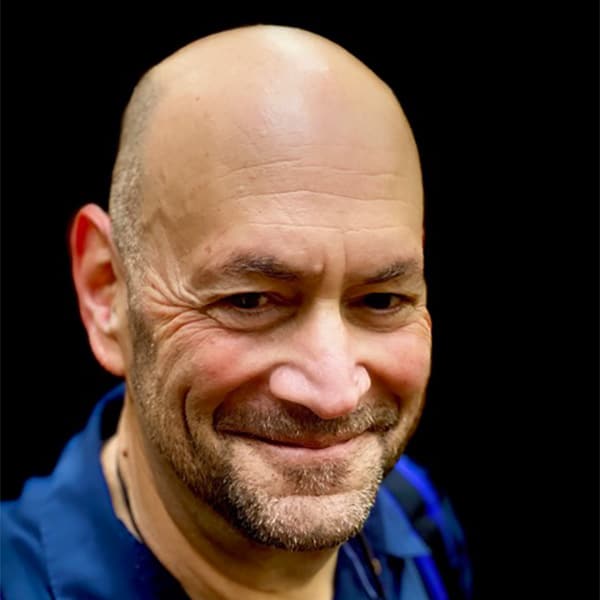Summary
In this talk, the speaker draws on his extensive executive coaching and product leadership experience, including his time at All Clear ID, to highlight prioritization as a fundamental tool for innovation and effective decision-making in complex environments. He introduces the concept of prioritizing across horizon one (day-to-day business), horizon two (foundation for future growth), and horizon three (long-term innovation), explaining how balancing these enables organizations to scale without losing sight of transformational opportunities. He shares how he created a visual, iterative prioritization framework at All Clear ID by engaging stakeholders like Maria and Dennis Allison to cluster priorities into technical debt, feature development, process improvements, and innovation. Using this approach, the company secured crucial investment to rebuild organizational capabilities and scale sustainably. The speaker also offers practical advice for managing emotion at work and stresses that clear, optimistic communication and stakeholder alignment are vital for success.
Key Insights
-
•
Prioritization drives everything in innovation and organizational success, guiding what gets attention and resources.
-
•
Innovations vary from big eye changes like elevators to small eye improvements like nail clippers, each with systemic impact.
-
•
Viewing problems as design challenges helps tailor strategies according to their scope and solvability.
-
•
Balancing urgent and important tasks with important but not urgent long-term investments is critical.
-
•
The horizon model (1,2,3) helps organizations separate current operations, foundation building, and future innovation.
-
•
Iterative stakeholder engagement is essential to build a shared prioritization framework that reflects multiple perspectives.
-
•
Breaking priorities into clusters such as technical debt, defects, new features, and process automation clarifies focus areas.
-
•
Prioritization frameworks enable transparent reasoning behind choices, facilitating alignment and investment support.
-
•
Organizational scaling requires removing barriers and investing across horizons simultaneously to sustain growth.
-
•
Leadership attitude—being blunt yet optimistic—drives confidence and followership during transformational change.
Notable Quotes
"If we could do everything that was important, we would just do it."
"Priorities don't necessarily need to be in a list but even unspoken priorities drive the work that's getting done."
"I’ve become a subversive designer because I’m now considered a product leader using prioritization at the organizational level."
"The urgent and important stuff competes with the important but not urgent, and we have to sort that out."
"We talked to fifty people and started to see how the world was shaping up in terms of what we needed to do."
"You have to choose what you’re going to do in order to win—and implicitly what you’re not going to do."
"Horizon one investments are about running the business today, horizon two about reinforcing growth, horizon three about long-term bets."
"People will not sabotage what’s going on if they feel like they’ve been part of the process."
"Be blunt with people but be optimistic—your attitude is going to be the thing that drives success."
"We got the board to write a check bigger than they’d ever spent because we had clarity on priorities and investment needs."
Or choose a question:
















More Videos

"Low vision users often invert colors and use magnification levels as high as 400 percent to reduce eye strain."
Sam ProulxSUS: A System Unusable for Twenty Percent of the Population
December 9, 2021

"You don’t want so much governance that people can’t be creative, but you need just enough to help their process."
Michael LandEstablishing Design Operations in Government
February 18, 2021

"VOC wasn’t a replacement for user research, but an enhancer that captured nuggets researchers might miss during discovery."
Shipra KayanHow we Built a VoC (Voice of the Customer) Practice at Upwork from the Ground Up
September 30, 2021

"Careers as ladders are what HR wants, but careers aren’t linear; they should be a jungle gym."
Ian SwinsonDesigning and Driving UX Careers
June 8, 2016

"The chief of staff serves as a bridge between the design program managers, executive assistants, and other ux and product chiefs of staff."
Isaac HeyveldExpand DesignOps Leadership as a Chief of Staff
September 8, 2022

"Controls like insurance qualifiers and legal agreements were necessary guardrails for this new way of working."
Amy EvansHow to Create Change
September 25, 2024

"Super strength is the resilience and endurance to partner and drive strategic impact backed by customer obsession."
Kate Koch Prateek KalliFlex Your Super Powers: When a Design Ops Team Scales to Power CX
September 30, 2021

"People don’t share their beliefs; you have to search for and understand them to get true buy-in."
Dave GrayLiminal Thinking: Sense-making for systems in large organizations
May 14, 2015

"Providing immediate tactical value is the big one for just-in-time curation."
Matt DuignanAtomizing Research: Trend or Trap
March 30, 2020
















